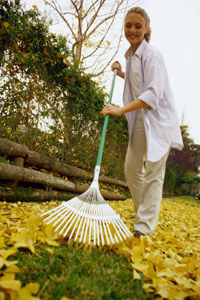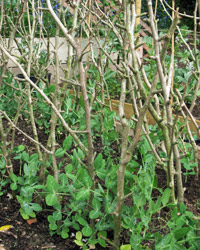- Flowers
Flower Bulbs Allium Bulbs Anemones Begonia Tubers Crocus Bulbs Daffodil Bulbs Dahlia Tubers Hyacinth Bulbs Lily Bulbs Tulip Bulbs Woodland Flower Bulbs Other Flower BulbsFlower Plants Annual Bedding Plants Children's Flower Plants Clematis Climbing Plants Cottage Garden Plants Exotic Plants Flowers For Cutting Plants Foliage Plants Greenhouse & Indoor Plants Ground Cover Plants Hanging Basket Plants Lavender PlantsHardy Geraniums Herbaceous Border Plants Heuchera Pansies and Violas Patio Plants Water Plants Window Box Plants Winter Bedding Plants Hydrangea Large impact plants Recommended By Our Experts
- Fruit & Vegetables
- Trees, Shrubs & Ornamentals
- House Plants
- Tool Shed
Garden Tools & Equipment Barrows and Trolleys Garden Solutions Harvesting Plant Supports Seed Sowing Tree Stakes Water Butts Weed Control Hand Tools Secateurs, Snips and Pruners WorkshopGarden Irrigation & Watering Irrigation Kits Water Butts Hoses & Sprays Miscellaneous Fertilisers Plant Pots Hanging Baskets Plant Protection Garden Compost All Compost
- Outdoor Living
Garden Living Barbecues & Firepits Garden Storage Solar Lights & Lighting Fixtures & Ornaments Awnings Sail Shades Garden Clocks Landscaping Lawn Edging PavingPatio Heaters Gas Patio Heaters Electric Patio Heaters Fire Pits, Chimeneas, Fire Baskets Wallmounted/Ceiling Patio Heaters Freestanding/Table Top Patio Heaters Water Features Solar Powered Water Features Mains Powered Water Features Indoor Water Features Outdoor Water FeaturesGarden Furniture Rattan Furniture Parasols Garden Benches Dining Sets Loungers Wooden Furniture Party Tents & Gazebos
- Wild Birds
- Gardening Info
- Special Offers
- 'How to' Gardening Guides
- Monthly garden tasks

Fallen leaves are incredibly useful in the garden. Try composting them or making leafmould for improving your borders.

Collect any twiggy sticks to use as pea supports or for supporting herbaceous perennials in the summer.
Join Our Gardening ClubVan Meuwen Gardening Club
Become a Member
Join our Gardening Club to unlock exciting perks and discounts!
JUST £10 for one year's membership
10% OFF EVERY order placed online £20 worth of Van Meuwen Vouchers Exclusive members only deals Join Now
Caring for storm damaged gardens
Severe storms can be very damaging to gardens, causing branches to break and creating lots of plant debris. It's best to remove torn branches as this will aid faster healing and reduce the chance of pests and diseases taking hold. Read our tips on caring for storm damaged trees and shrubs, and making use of any branches and leaves which have fallen.
Trees
Storm damaged trees can often be under a lot of strain, resulting in a quick release of energy when a branch is cut through with a chainsaw. To avoid injury, leave the removal of large branches to professional arboriculturists.
Prune smaller broken branches at the point where they join a main branch, or if this isn't possible, prune the branch back to the trunk.
Avoid cutting branches flush with the trunk as this will delay healing. Place your pruning saw slightly away from the trunk and cut away at a slight angle. Make an undercut before overcutting to prevent the bark tearing.
Shrubs
For storm damaged shrubs, cut back any broken branches to a healthy bud or a point where the shoot joins the main stem.
Don't be tempted to do any further pruning to neaten the overall shape, unless it is the right time of year to prune your particular shrub.
Plant debris
If you don't already have one, try building a compost bin to make use of any fallen branches and leaves in your garden. Make sure you layer leaves, woody prunings and dead plant material with grass clippings or vegetable kitchen waste to aid the composting process.
Any small branches are best cut into pieces or put through a garden shredder before adding to the compost heap to help them break down faster. The chipped wood also makes an effective path material.
Collect any twiggy sticks to use as pea supports or for supporting herbaceous perennials in the summer.
Lots of leaves!
If you don't have a compost bin, leaves can be put to good use by making leaf mould, a fantastic soil improver.
Collect leaves into a bin bag, loosely tie the top and then pierce holes in the side. The leaves should be moist so add a little water if necessary.
Stack the bags somewhere out of the way for 12-18 months to allow the leaves to break down. Oak, beech and hornbeam leaves break down a lot more quickly than sycamore, plane or horse chestnut leaves. Shred the latter before placing them in bags and avoid using leaves from evergreen plants.
Quick Links:
Sign up to the Van Meuwen Gardener's Club for Special Offers
Delivery Information Privacy Policy Cookies Terms of Business Affiliate Programme Planting & Cultural Advice Contact Us© 2024 Van Meuwen. All rights reserved. A division of Branded Garden Products Limited.
- House Plants
